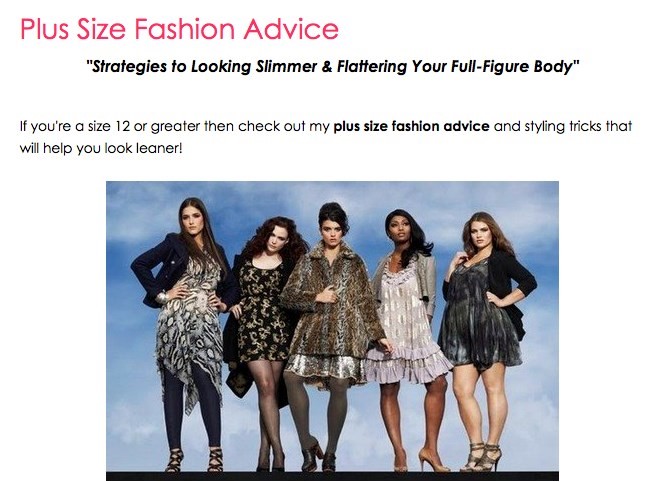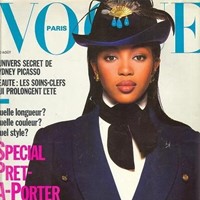Fashion is meant to be a fun way for people to express their personality – so why has it become an exercise in (self-)deception for larger ladies?
I am a fat woman who loves clothes. I care passionately about plus-size fashion. I buy a lot of clothes and try a lot of different looks, but more often than not, my fashion life is spent craving things I can’t have. And why can’t I have it? Because plus-size fashion retailers think I won’t buy it, won’t wear it, or don’t deserve it.
The market for plus-size clothes is booming – Business of Fashion valued the US market alone at $17.5 billion this year – and has been for some time. In the years that I’ve been Properly Fat rather than on the cusp of plus-size, things have got immeasurably better, year by year, for plus-size women. But it’s not there just yet.
At the core of what’s holding plus-size fashion back is a set of rigidly imposed rules and norms. The ultimate goal is to pretend you’re not fat. The secondary goal is to reproduce hegemonic beauty standards by faking or creating ‘womanly curves’, prizing so-called femininity, huge boobs, a flat stomach and wide hips. Using these two goals as the focal point of most design decisions means that most mainstream plus-size fashion is not a radical place.
This creates a vicious circle: plus-size retailers avoid making certain kinds of clothes, so consumers can’t buy them, so consumers think these clothes aren’t for them, so plus-size retailers can say that consumers don’t want them, so plus-size retailers avoid making certain kinds of clothes. Repeat ad nauseam. How can I buy something that has never existed for me?
“If you’re fat, you’ll look fat whatever you wear, and the sooner you and yours accept that, the better”
Maybe that’s where independent designers can step in. But no: things are even harder for independent designers who are trying to set new standards for plus-size fashion, thinking outside the box and trying to give more, better, different than mainstream retailers. Only this week, independent plus-size company Ready to Stare was ripped to shreds on social media over this dress. A particularly mainstream plus-fashion publication shared a picture of the dress on its Instagram account. Comments included “So unflattering. These beautiful ladies look huge now! Totally wrong apparel,” “I love the concept of breaking the glass ceiling of what plus-size beauties are supposed to wear but I feel this missed the mark :/ the red one just made her look big if it was more fitted I’d say yes because it's cute! :)” Translation: these clothes are bad because they don’t conceal the fact that fat women are fat. Oh, and photos of the very same dress cinched in the middle with a gold belt went down a storm. Most telling of all was a comment saying, “The red dress looks a million times better belted. God made a woman’s body in an hourglass shape.”
If plus-size fashion is creating the rules, then it has likewise created generations of women who follow those rules. You would think that fat women would be excited to see a great diversity of styles, an opportunity to try looks they hadn’t been allowed to before, but no. The rigid orthodoxy imposed by the big brands is so pervasive that choice and diversity is seen as a negative. Clothes that don’t ‘hug your curves’ or ‘flatter your figure’ are treated like a threat. There’s a UK mainstream plus-size retailer with a very active Facebook page, where they sometimes post photos of bloggers or customers wearing their styles. On multiple occasions, these fat women have struck out against others for daring to wear a jumpsuit that clings to their tummy, or a short dress that doesn’t conceal the fact they have fat thighs, always in brutally dismissive, patronising tones and peppered with caveats like, “Sorry, but that’s just my opinion.”

I’m meant to say I sympathise with these women, with their limited, negative view of what clothes they deserve, but when turning their negativity outwards, against peers trying to live their best life in clothes they love, against independent retailers trying something exciting in its difference, my sympathy is limited, because it has a real-world impact on me. No, fatphobia is not their fault, but their complicity in reducing the options available to us sits uncomfortably with me. Because of comments like this, retailers can justify writing off interesting ideas as an unsuccessful experiment that didn’t chime with their target market, and other fat women seeing these comments get discouraged and self-conscious, so don’t buy the clothes. Don’t like it? Don’t buy it. But take your vitriol elsewhere. I love critique, questioning, demanding more, but only when that’s directed at the hegemonic, the repetitive, the unoriginal, not taking a swipe at difference in a landscape where difference is a rare gem.
All of this is the effect of the ‘Cult of Flattering’. This is one of the strongest, most dominant norms of plus-size dressing, and dictates pretty much every styling decision made in plus-size fashion. For the uninitiated, this school of thought entirely revolves around the myth that these clothes will make fat people look thinner if you wear them in this way. These clothes will conceal the fact that you’re fat. This styling will trick those around you into believing you’re thin. Not flattering? Don’t wear it. Tight, short, bright, eye-catching, oversized, textural? But it’s not flattering.
“The ultimate goal is to pretend you’re not fat”
You don’t need me to tell you this is a thoroughly pointless endeavour. If you’re fat, you’ll look fat whatever you wear, and the sooner you and yours accept that, the better. More than that, though, the sooner you accept you’re fat, the sooner you can start dressing in the ways you want for the body you have, rather than dressing in ways you think will give you the body you don’t have.
It’s a sorry state of affairs that fashion, that’s meant to be fun, experimental and a way for people to express their personality, has, for fat women, become merely an exercise in (self-)deception. Instead of saying “what do I want to wear today?” or “What excites me?” the question is “How do I most efficiently pretend my body is what it’s not?” It’s a joyless enterprise, and fat women deserve better.
What needs to happen now? Mainstream retailers need to take more chances. Negative Nancys need to pipe the hell down about stuff they wouldn’t personally wear. The plus community needs to financially support indie brands doing what the mainstream won’t. Each of these three steps would go a long way to breaking the stranglehold of the vicious circle.




